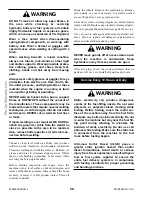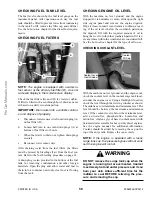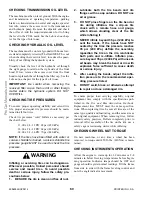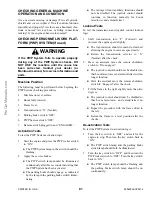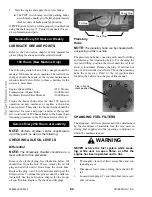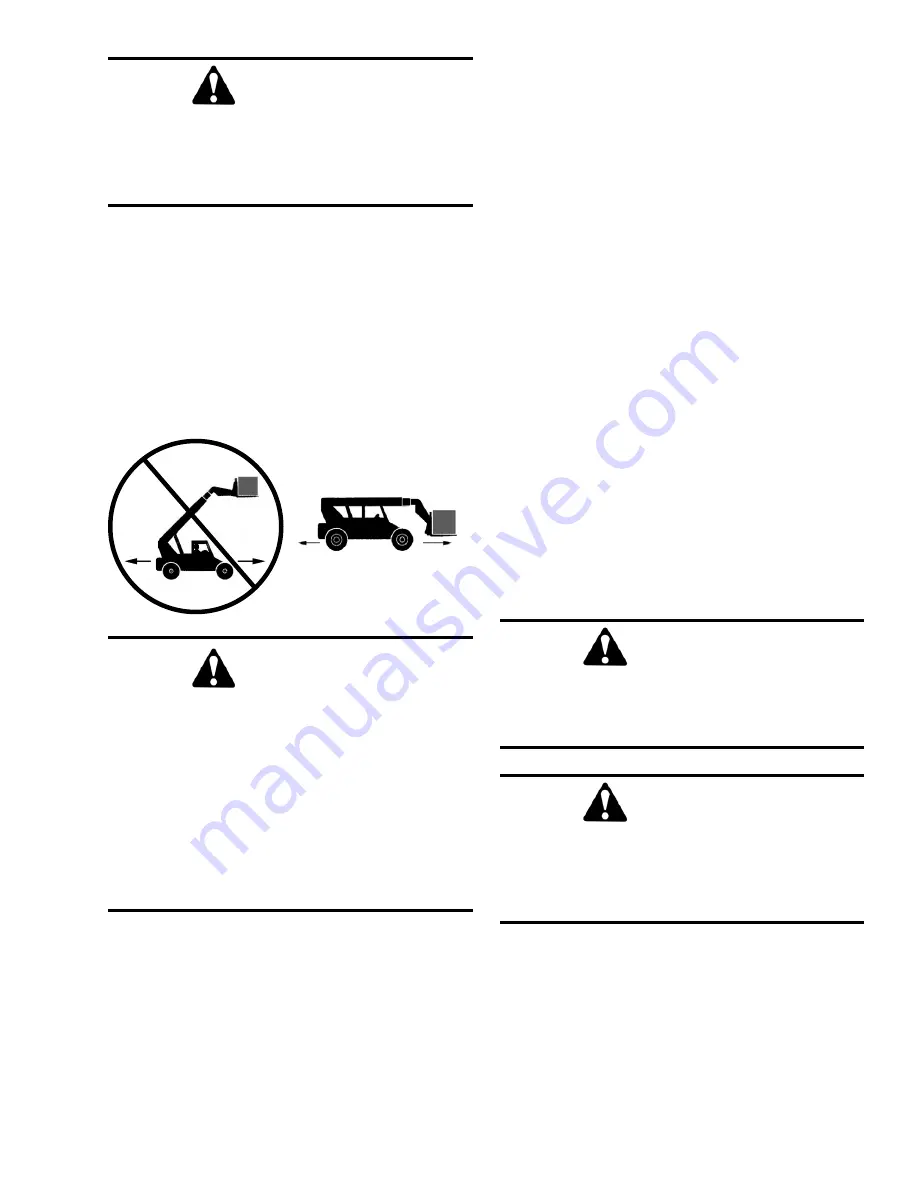
PRINTED IN U.S.A.
47
50960025/CP0514
Approach the load slowly and squarely with the
machine straight and level. Adjust the space between
forks, if necessary. Engage the load equally on both
forks until the load touches the carriage backrest. Tilt
the forks back to position the load for travel.
Carrying the Load
If the load obstructs your view, get someone to direct
you. Maintain ground speeds consistent with ground
conditions and that permit stopping in a safe manner.
Load Elevation and Placement
For ground level load placement, be sure the area
under the load and around the machine is clear of
equipment and personnel. Lower the load to the
ground, tilt the forks to the horizontal position, and
then carefully back away to disengage the forks from
the load.
For elevated or overhead placement, bring the machine
as close as possible to the landing point, and then:
1.
Level the machine BEFORE raising the load. Use
extreme caution for high placement. Be sure per-
sonnel are clear of the area where the load or the
machine could fall or tip.
2.
Set the parking brake, hold the service brake
pedal fully applied and slowly raise the load,
maintaining a slight rearward tilt to cradle the
load.
3.
As the load approaches the desired height, feath-
er the boom control at minimum speed until the
load is slightly higher than the landing point.
4.
Continuing the feathering technique, lower the
load into place.
5.
Free the forks from the load by alternately retract-
ing and raising the boom. If this process is not
possible, very slowly and carefully reverse the
telescopic handler to free the forks from the load.
6.
Lower the forks to travel height.
HANDLING SUSPENDED LOADS
Determine the weight and load center of the load to be
handled. Refer to the telehandler load chart to deter-
mine if the load can safely be handled.
NOTE:
Refer to the standard carriage load chart
when using the boom mounted hook.
Picking Up Suspended Load
1.
Rigging should be in good condition and rated for
the load being lifted.
WARNING
Operating conditions can reduce the
machine’s safe operating capacity. Exceeding
the capacity when raising or extending the
boom will cause the machine to tip forward.
WARNING
NEVER travel with the boom above the carry
position (attachment tool should be at mini-
mum ground clearance). Boom should be fully
retracted.
Use lower gear when traveling down an
incline. NEVER coast with the transmission in
neutral. Travel up and down grades slowly.
DO NOT operate the machine on a slope or
grade that exceeds 22% or 12
o
.
WARNING
Operating conditions can reduce the telehan-
dler’s safe operating capacity. Exceeding the
capacity when raising or extending the boom
will cause the telehandler to tip forward.
WARNING
NEVER exceed the rated operating capacity of
the telehandler as shown on the load zone
charts.


























